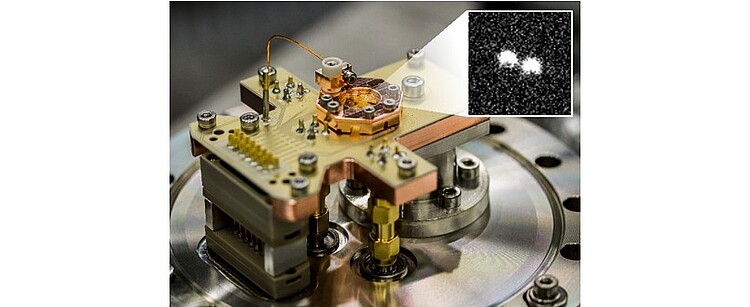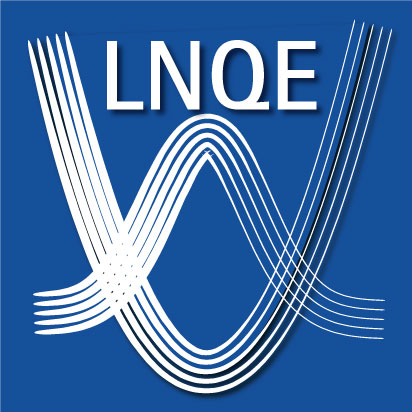Trapped-Ion Quantum Computer

| Led by: | Supervisor: Prof. Dr. Christian Ospelkaus, LUH, Institute of Quantum Optics. Co-Supervisor: Prof. Dr. Rolf Haug, LUH, Institute for Solid State Physics |
| Team: | Niklas Orlowski |
| Year: | 2020 |
Trapped ions are one of the two leading platforms for future quantum computers, exhibiting the high-est operation fidelities and optimal connectivity between qubits for gate operations. Planar, microfab-ricated surface traps are an ideal scalable platform for storing the ion qubits. However, present small-scale quantum computers based on trapped ions are almost exclusively based on macroscopic traps that are not easily scalable. Logic operations are typically carried out using focused laser beams that are difficult to control and scale to larger system sizes. The goal of this thesis project is to contribute to the development of a quantum computer based on scalable microfabricated ion traps that is capa-ble of running actual quantum algorithms.
We aim to realize a demonstrator machine where all operations are carried out in scalable, planar micro-traps. We pursue an approach [Nature 476, 181 (2011); npj Quant Inf 5, 70 (2019)] where all elementary logic operations are carried out using microwave control elements embedded into the micro-trap, rather than with external laser beams. This provides inherent scalability by virtue of microfabrication. We have recently demonstrated robust two-qubit gates [PRL 123, 260503 (2019)].
Our next goal is to embed the microwave control elements that we have developed into a multi-zone trap array with storage registers, multi-qubit gate registers and readout registers. Your thesis work will consist in the simulation and design of microtraps, the fabrication of trap arrays based on our patented process [NJP 21, 043011 (2019)], and in operating trap arrays with advanced real-time control infrastructure and implement small algorithms. You will be part of an international team and learn about microfabrication, UHV technology, FPGA-based real-time control, numerical simulations and precision optics.
Figure: Ion micro-trap (inside central copper structure) for scalable quantum logic operations. The inset shows a resonance-fluorescence image of two 9Be+ trapped-ion qubits.
Group info: https://www.iqo.uni-hannover.de/en/research-groups/trapped-ion-quantum-engineering/






